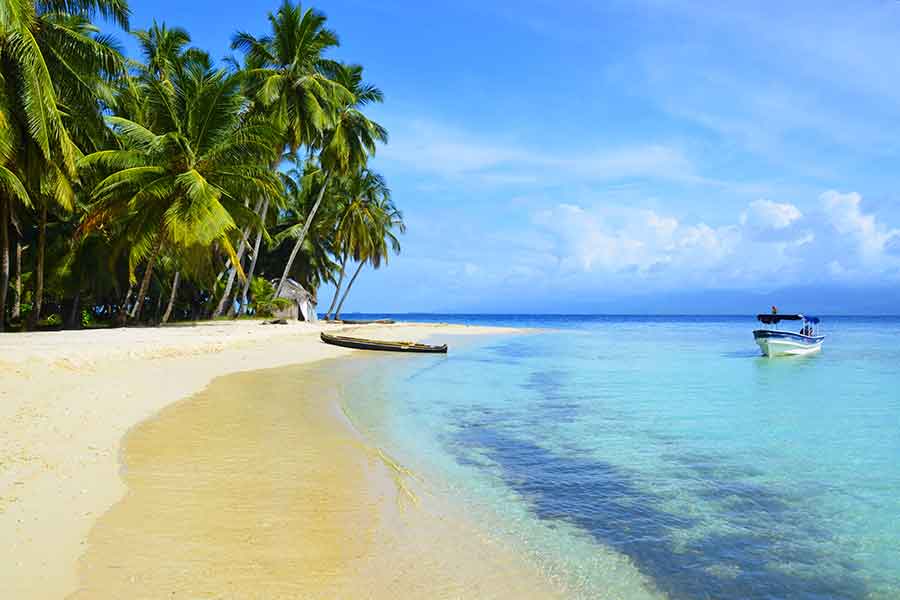PANAMA CITY, PANAMA – DECEMBER 22, 2021 – As travelers plan last-minute end of year getaways, and snowbirds search for new, exciting destinations to escape the dead of winter, Panama invites travelers to kick off 2022 with warm temperatures and newfound traditions. Culturally curious travelers can give their winter holiday a new meaning with the country’s immersive offerings, which bring Panama’s rich heritage to life far beyond the conventional museum experience.
From Panama City’s historic center to small towns in the rural outskirts, these centuries-old artisan traditions take travelers on an enriching cultural journey like no other.
Take a Mask-Making Workshop
At the Dario Lopez Workshop in the Parita District, visitors can meet, greet and work alongside one of Panama’s top artisans. Officially recognized as a Maestro Artesano, or Crafts Master, Dario Lopez has been crafting colorful masks for folkloric dancers for five decades. His delicately handcrafted masks are used in performances at pagan-religious festivals of Corpus Christi, San Juan, San Pedro, San Pablo and many other activities in which these devil characters bring tradition to life. As part of his workshop, travelers can get hands-on and delve into the multiplicity of shapes, colors, techniques and materials used in the mask-making process.
Dress up in a Traditional “Pollera”
Panama’s national dress, the pollera, consists of a handmade skirt and blouse with layered frills running from the bodice down the full length of the skirt. A single pollera can cost from several hundred to several thousand dollars and takes up to a year to create. Dressing up in one is considered ceremonial in its own right and in Panama City’s Casco Viejo neighborhood visitors can do just that. Fashionistas and culture buffs alike can stop by local shops to learn about its history, variations in design and color – from the pollera montuna which has a flowered skirt to the pollera gala which is the most elaborate and worn on special occasions. The ensemble is accompanied by a mosqueta – typically a gold and pearl brooch or pendant, as well as tembleques – intricate headpieces, both of which are generally passed down as heirlooms through generations.
Get Fitted for Custom Cutarra Sandals
Panama’s cutarra sandal is an ancient, traditional style of footwear dating back centuries.
It’s believed that these woven leather sandals originated with the arrival of the Spaniards to the Azuero peninsula after the destruction of Panama Viejo. The region was dedicated to raising livestock and provided access to leather, which farm workers began using to create more comfortable, durable shoes. Travelers today can visit the Los Santos region, where Santeño artisans still utilize the traditional crafting process, measuring the foot and weaving the strips on customers while standing.
Learn Weaving at a Sombrero Pintao Artisan Workshop
The pintao hat has become a staple, and integral part of regional attire throughout Panama worn proudly during traditional dances and heritage celebrations. Recognized by UNESCO as an Intangible Cultural Heritage of Humanity, the artisanal process of obtaining the plant fibers for weaving talcos, crinejas and pintas used to make pintao hats is a manual process carried out using five types of plants and swamp mud. Techniques for this celebrated craft have been passed down through generations and even include weaving contests, encouraging artisans to continue honing their skills. Visitors can get a glimpse first-hand at the Pintao Hat Museum in the La Pintada District which recreates the hat-making process, environment and showcases hats from different periods. Panama’s artisanal hat industry promotes collaboration among plant nurseries and artisans, which work closely together in cooperatives to upkeep production. There are more than 400 identified artisans working with traditional techniques who make a living from their craft and proudly keep Panamanian heritage alive through their creations.
About Panama Tourism
The Tourism Authority of Panama (ATP) is the Panamanian Government entity that aims to strengthen tourism as a strategic economic sector of Panama, through the Master Plan for Sustainable Tourism (PMTS) 2020-2025. Developing a sustainable model that generates an increase in employment nationwide, integrates communities, articulates the territories and increases the competitiveness of the industry.
Additionally, PROMTUR Panama is the official destination marketing organization (DMO) whose primary purpose is to promote and market Panama internationally. PROMTUR works closely with the ATP to further propel the country’s international promotion as a world-class tourist destination.
Together, ATP and PROMTUR work to promote Panama’s rich history, culture, natural beauty and remote locations, which are experienced through the destination’s three heritage pillars – Cultural Heritage (multifaceted culture), Green Heritage (extraordinary biodiversity) and Blue Heritage (ocean wonders).



